Arctic by RIB – Episode 2 Scotland to the Orkneys
DAY 3rd / Tuesday 5 of July 2022
Position: 58°57΄Ν 03°15΄W – Stromness (Orkney Islands)
At 11:30 local time we were leaving Eyemouth astern and slowly making our way to the unique village of Stromness, which we had chosen as a refueling and rest stop because of its rich history as well as its wonderful architecture. Total distance of 200 nm. Winds W, NW intensity 4-5 Beaufort. Temperature 11-13 °C.
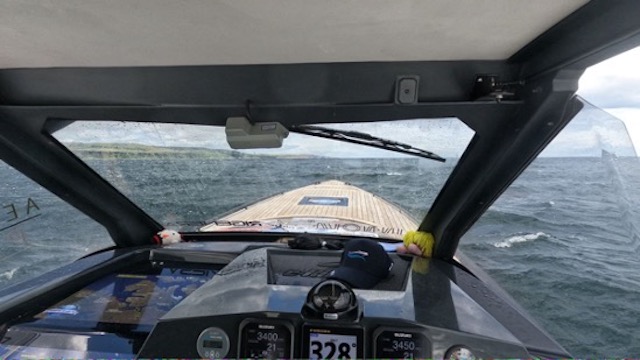
After Fraseburgh, the big swells coming off the ocean combined with their short period forced us to veer further west and reduce our speed. Entering the strait of the Orkney Islands, we got a good taste of the incoming tide, and the eddies it created in combination with the strong currents gave us a unique experience.
It wasn't windy at all but the whole sea was heaving and deflating reminding us how threatening it can get at any moment. The currents were very strong--we could clearly feel it on our propellers. Violent swirling eddies covered large areas, the waters were dark, and we were traveling in a hazy and gray landscape. Traveling at 23-30 knots, we covered our route in 8 hours burning a total of 711 liters (187.8 gal.)
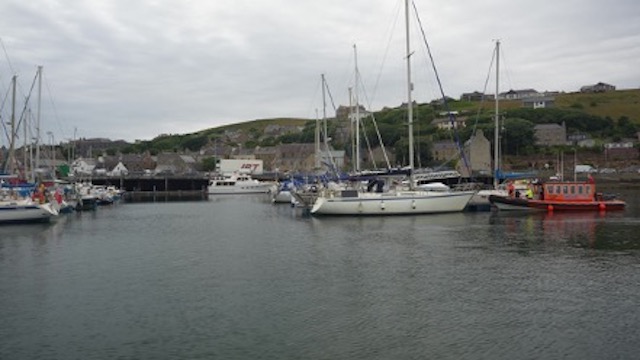
We moored at Stromness Marina where we were greeted and served brilliantly, and soon after, we went for a warm shower a few yards away on the west side of the marina. Of course, after our incredible experience in Eyemouth, the first thing we made sure to ensure was refueling. Fortunately, here the gas station is more organized and transports fuel with a truck, as long as you have the appropriate tanks.
The Suzuki Engines for the Mission
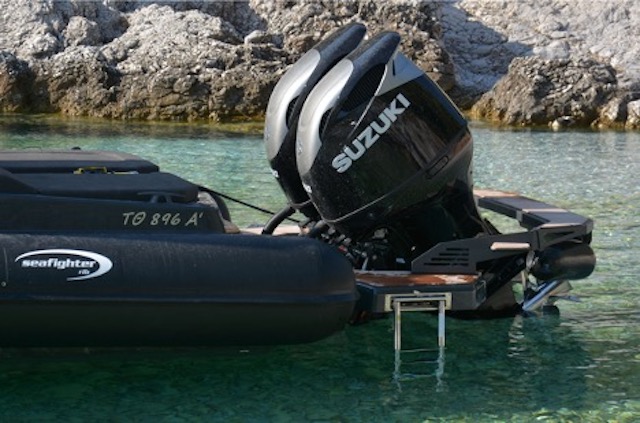
Our RIB was powered by a pair of fuel-efficient Suzuki DF350A 350-hp outboards with counter-rotating stainless-steel propellers, delivering dependable power to push the boat through the towering seas we knew we would encounter along the way.
The gearing and the large diameter of the twin propellers proved particularly effective at powering our heavily-loaded boat when she was full of fuel and keeping her on plane could have been a challenge running up sea—the engines did the job they were designed for throughout the trip. Here are the major reasons we selected the Suzuki 350:
• Shorter time to plane and lower-rpm planning ability
• Greater acceleration
• Much better bite on the water
• Significant reduction of slip percentage resulting in higher cruising speed and better fuel economy
• Elimination of the steering torque
• Better control in reverse
The twin propellers, the high horsepower and the tall gear ratio in this horsepower are an explosive combination of torque and thrust, making the DF350A the most powerful engine on the market, in its class. It is also the only 350-hp outboard with dual props.
It is certain that the specific engines will find ideal application in our overloaded craft, while their relatively low consumption at low and medium rpm, derived mainly from the stern lift of their propellers.
DAY 4nd / Wednesday 6 of July 2022
Position: 58°57΄Ν 03°15΄W – Stromness (Orkney Islands)
This day was planned for a general inspection of the boat and then familiarization with Stromness.
We are on the 59th parallel, in the isolated and mysterious Orkney Islands of the North Sea. They form an archipelago just 16 km from the northern coast of Scotland and count 70 islets, of which 19 are inhabited. Their population amounts to 20,000 inhabitants, while the largest island is Mainland (Mainland), which is located in the center of the complex and divides the rest into two groups, the northern and southern islands.

The Orkney Islands
Orkney belongs geographically to Scotland and politically to Great Britain. The largest city and administrative center is Kirkwall and is located on the island of Mainland. The native inhabitants maintain a special identity considering themselves closer to the Scandinavians, as genuine descendants of the Vikings.
Stromness has been a safe haven since the Viking Age, a whaling and herring fishing port, a diving base and a shipping gateway to Scotland with an unrivaled maritime heritage. With traditional cafes, bars and restaurants, Stromness is a wonderful base for exploring the Orkney Islands. There are all the amenities for a town of around 2000, a public swimming pool, gym and squash courts, a well-stocked library and a golf course towards the end of the settlement with great views.
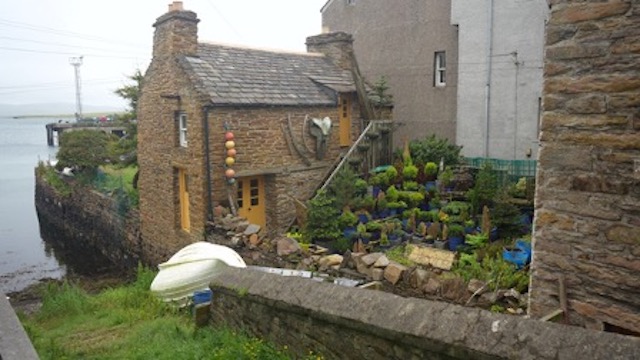
We took the central cobbled and very picturesque street that runs parallel to the sea. Every few meters there is a vertical alley that leads shortly to the sea along which the stone houses of the settlement are built. Almost every corner was a magnificent picture.
The cold, the drizzle and the fog make this place particularly mysterious. It seems clear that the place is surrounded by legends inspired both by the wildness of the landscape and by the Celtic and Scandinavian tradition.
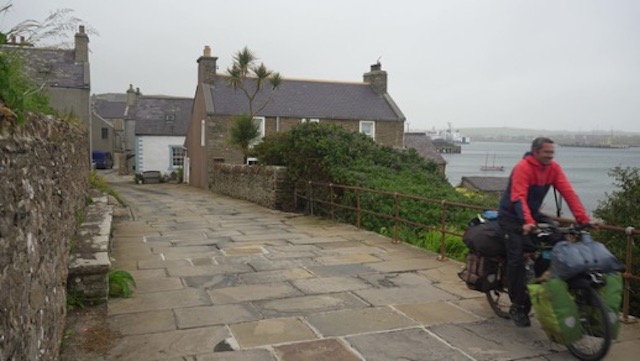
In a short time we reached the westernmost end of the settlement. The wind was raging, the waves were crashing furiously on the shore, and the fog was getting thicker and thicker. We took the narrows that ascend the hill from where the view towards the village captivates the eye and ignites the imagination. A magical setting, full of mystery emerging from the constant changes of weather and colors in an incredibly peaceful place.
High Winds Become a Problem
Filled with the unique images the short walk gave us, we sat down for a beer and checked the weather forecast for the next few days. Our intention was to reach the Faroe Islands 200 nautical miles further north. Our good mood suddenly changed when we realized that for the next seven days the winds would exceed 25 knots and were coming from the northwest.
The disappointment was enormous as the whole mission program was in danger of being thrown into the air. And, of course, it seemed impossible to make it to Nuuk, Greenland on the 20th, where Cristiano Segnini and Carlos Santaella were scheduled to arrive. On the other hand, it was very dangerous to travel in these conditions.

No matter how hard I tried to find a solution, the anxiety was overwhelming me. But a decision had to be made. The pressure and responsibility was enormous. It was the first major decision I had to make. I locked myself in the cabin and carefully studied the forecasts. I anxiously searched for even a small window that would allow us to sail away.
For a 10 hour navigation with the least strong wind. I was intently studying the direction of the barometrics trying to plot the least painful course. We had 200 nm of ocean separating us from the Faroe Islands. I knew very well that the lows that originate south of Greenland are almost permanent and head east towards the Faroe and Orkney Islands causing the roughest seas in the Northern Hemisphere.
Finally, sleepless, after many hours of thinking and various emotions, the big decision was made. 3:30 in the morning we untied the bow lines. Winds were forecast to be NW at over 20 knots by midday. Then they reached 25 knots while near the Faroe Islands they were approaching 28. According to the course of the low barometric, we had to rush to cover the first 50-70 miles so that we could then slowly put the weather to our side and as we approached the Faroes we would have it astern.
Something that finally never happened...
Tuesday: Part III -- Orkneys to the Faroe Islands
IF YOU HAVE MISSED ANY EPISODES OR WOULD LIKE TO SEE MORE CLICK HERE.